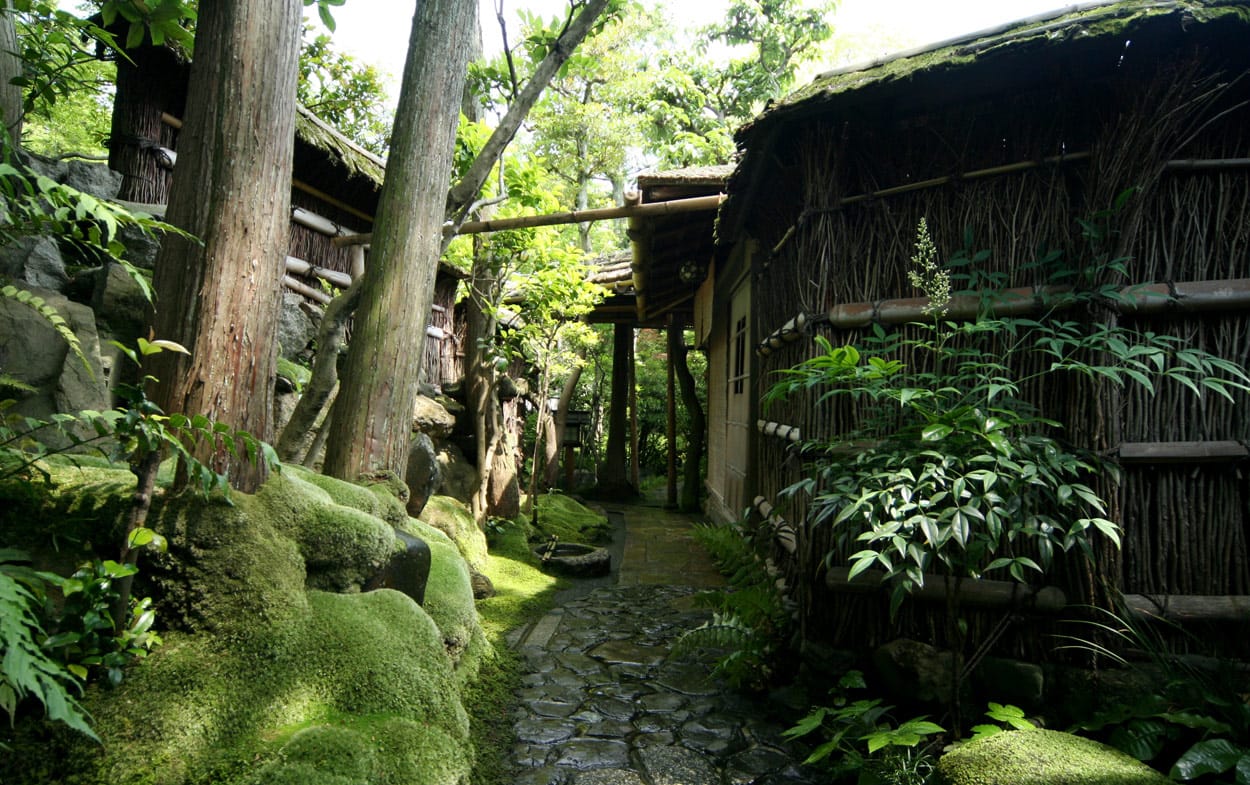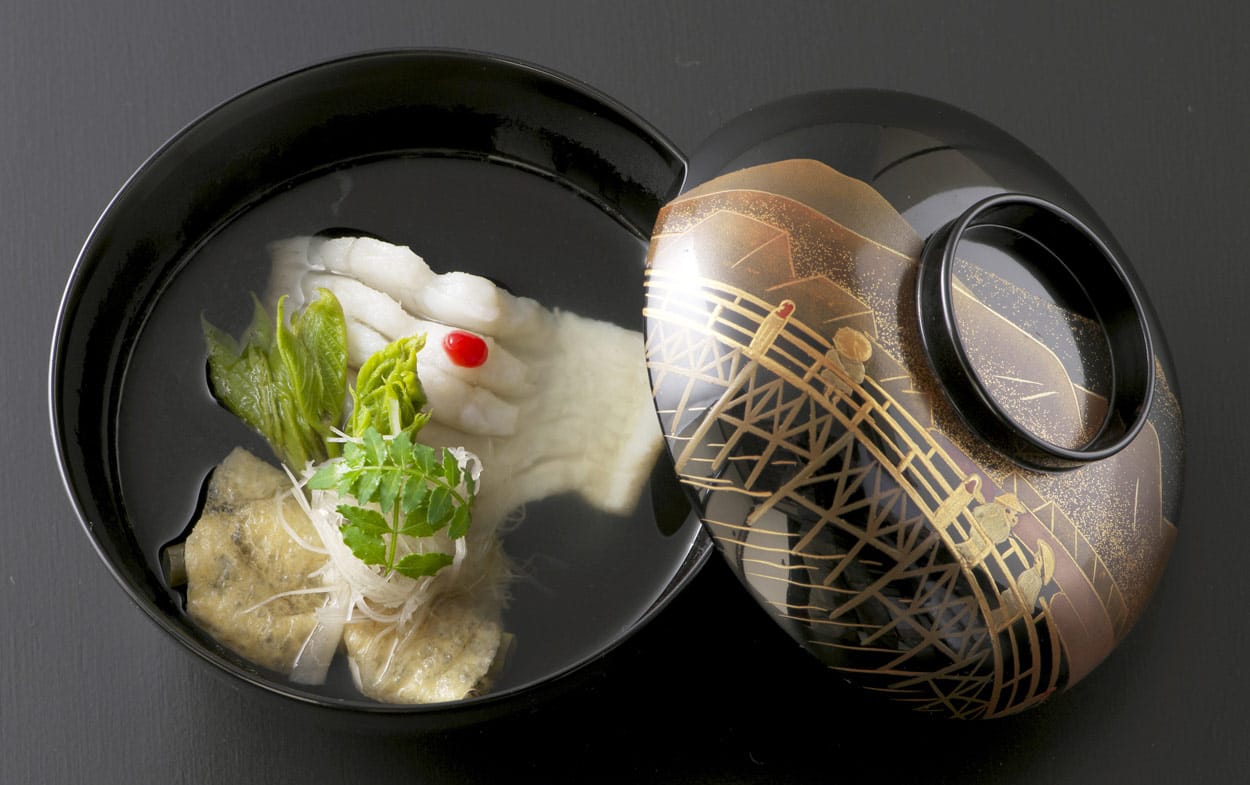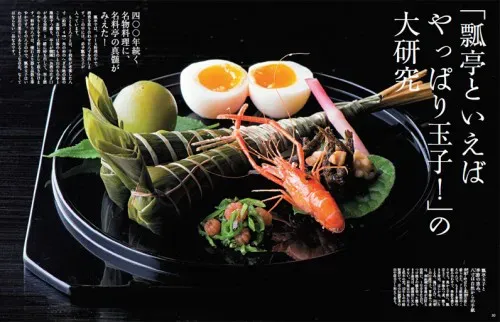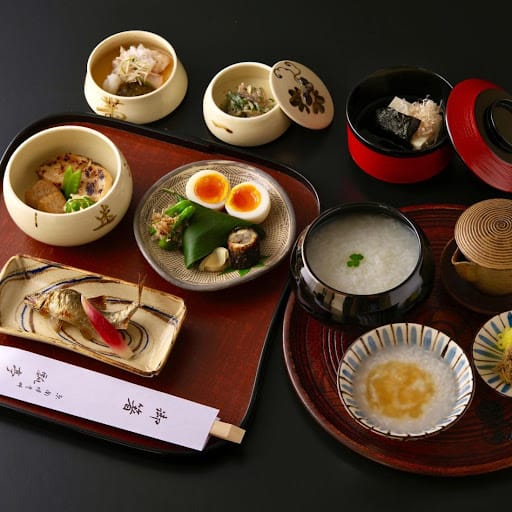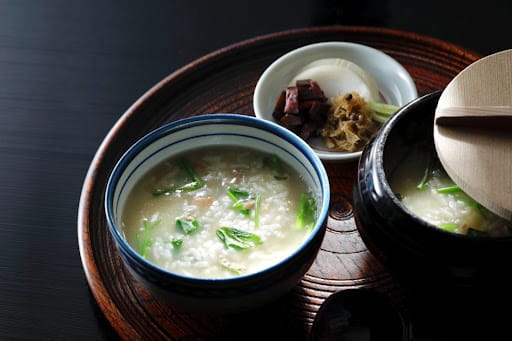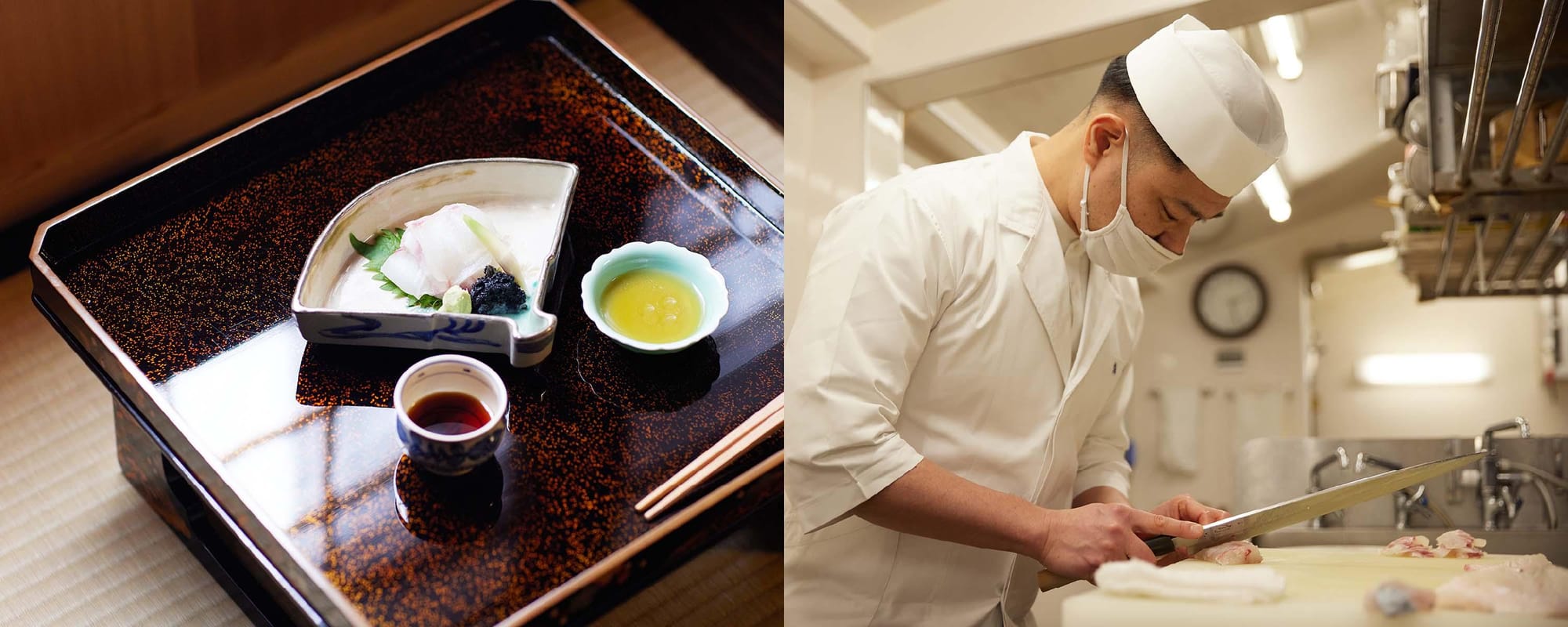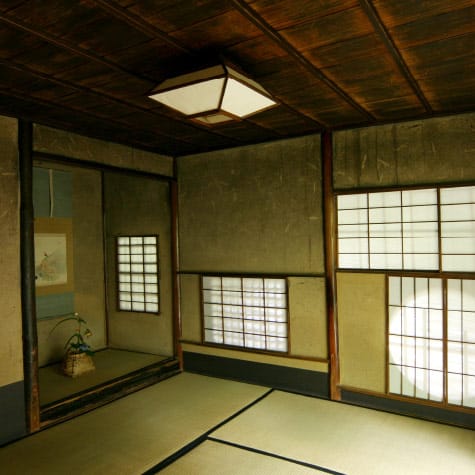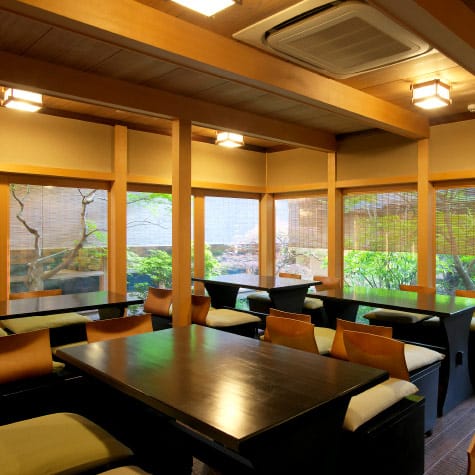Kyoto, which functioned as Japan's capital for over 1,000 years, is a beautiful city where you can feel Japan's tradition and history. It's popular as a tourist destination, attracting many visitors from both within Japan and abroad.
Kyoto has many beautiful and historically deep cultures, one of which is the food culture called "Kyoryori" (Kyoto cuisine). Originally, "Kaiseki ryori" (multicourse dinner) served before tea ceremonies and "Shojin ryori" (Buddhist vegetarian cuisine) based on Buddhist teachings were famous. Also, "Obanzai" (home-style dishes centered on vegetables grown in Kyoto) is so popular that there are specialized restaurants and izakayas.
Kyoto is a city of fine dining, not only in Japan but also globally. The fact that it ranks third in the world for the number of Michelin-listed restaurants after Tokyo and Paris demonstrates the high level of dining in Kyoto.
In this article, we'll introduce "Hyotei," a long-established restaurant that has been awarded 3 Michelin stars for 15 consecutive years, from among Kyoto's restaurants.
What is Hyotei, a Long-established Restaurant with 450 Years of History?
Source: Official website
Hyotei has a long history, starting about 450 years ago as a tea house within the grounds of "Nanzenji" temple. There are records of it being established as a restaurant in 1837. Hyotei is also mentioned in a book published in 1864, indicating that some of the dishes currently served have been around since that time.
A building called "Kuzuya," which has remained unchanged since the restaurant's founding, still stands and welcomes people today. The traditional architectural style of the building exudes a solemn and quiet atmosphere typical of Kyoto, emphasizing tradition.
In Kyoto, there are several long-established restaurants, Japanese confectionery shops, and kimono stores that have been in business for over 100 years. Among them, Hyotei stands out with its exceptionally long and deep history.
A Renowned Restaurant Awarded 3 Michelin Stars for 15 Consecutive Years
Michelin is known for evaluating restaurants through strict inspections by undercover inspectors. As a result, their evaluations are trusted by people worldwide. The highest rating of 3 stars is given to restaurants with "exceptional cuisine, worth a special journey," and Hyotei has been awarded 3 stars for 15 consecutive years.
In 2024, out of over 8,300 restaurants in Kyoto, only 5 were awarded 3 Michelin stars. One of these five restaurants, "Kikunoi Honten," has also been listed with 3 stars for 15 consecutive years, just like Hyotei.
The successive owners of these two restaurants have a relationship where they advise each other. This shows how Japanese cuisine has been passed down through generations in Kyoto within good human relationships.
Enjoy Traditional Kyoto Kaiseki Cuisine at Hyotei
Source: Official website
"Kaiseki ryori," one of Kyoto's cuisines, originated as a meal served to alleviate hunger before drinking tea.
Japan has a traditional culture called "Sado" (tea ceremony). It's a ritual where guests are invited, water is boiled, and matcha tea is prepared and served. Kaiseki cuisine was served on these occasions to make the tea taste better. Due to the purpose of enhancing the tea, kaiseki cuisine uses simple yet profound flavors based on seasonal ingredients and dashi broth, rather than heavy seasonings.
At Hyotei, which started as a tea house, traditional kaiseki cuisine is served. Hyotei's cuisine is known for its rich umami, depth, and flavorful dashi. The course meals consist of gentle dishes that carefully bring out the flavors of the ingredients, and signature dishes like "Hyotei Tamago" (Hyotei's egg) and "Asagayu" (morning porridge) are synonymous with Hyotei.
Three Popular Menu Items at Hyotei, Offering "Unchanging and Ever-changing Kyoto Cuisine"
Hyotei Tamago
Source: CanCam
When it comes to Hyotei, "Hyotei Tamago" is the most famous and popular specialty. It has been served unchanged since the time when Hyotei was still a tea house before becoming a restaurant.
While it looks like a simple boiled egg, once you taste it, you'll be instantly captivated by its texture and flavor. Its exquisite softness and smoothness, which seems like it might drip when picked up with chopsticks but doesn't, is a charming point. The carefully seasoned yolk is topped with a rich dashi broth. A little salt is added, creating a perfect balance and deep flavor.
I felt that this single egg encapsulates all the characteristics of Hyotei, from the use of dashi to the cooking methods that bring out the flavors of the ingredients. It's a dish I highly recommend savoring slowly, one bite at a time.
Asagayu (Summer Limited)
Source: Official website
"Asagayu," served only in the mornings during July and August, is another signature dish of Hyotei. In fact, many people visit Kyoto in summer just for Hyotei's morning porridge.
Rice commonly eaten in Japan is polished white rice cooked with water, and the hardness of the finished rice changes depending on the amount of water. "Okayu" is soft rice cooked with extra water, which can be eaten without burdening the digestive system.
At Hyotei, porridge is served in the hot summer when appetites tend to decline, allowing for easy nutrient intake without burdening the body. Hyotei's morning porridge, with beautifully cooked rice topped with plenty of dashi-based sauce, was the most delicious breakfast I've ever had in my life.
Uzuragayu (Winter Limited)
Source: Official website
From December to mid-March, Hyotei offers "Uzuragayu" (quail porridge). This relatively new menu item was devised by the 13th generation owner to warm the body easily during the cold season. It has now become a winter staple loved by many at Hyotei.
It's a smooth-textured porridge with small pieces of quail meat, spreading the umami of quail, rice, and dashi throughout your mouth. It's a simple yet profound flavor that gently permeates your cold body.
Last winter, I enjoyed quail porridge in the cold season before visiting Nanzenji temple. While my core was warmed, my cheeks and hands felt the cold air, creating an experience that made me feel the "wabi-sabi" (rustic simplicity) characteristic of Kyoto.
Pay Attention Not Only to the Food, but Also to the Refined Atmosphere and Tableware
Source: DINOS
At the historic Hyotei, not only the food but also the restaurant's atmosphere and prepared tableware are all of high quality and refined.
Once you step inside, you're greeted by a beautiful Japanese-style garden that feels like entering a different world. The garden, created using stones, moss, water, and trees, exudes a simple yet profound charm. As it was originally a tea house, you can enjoy your meal in a "chashitsu" (tea room) designed for hosting tea ceremonies.
All of Hyotei's dishes are served on beautiful tableware. They change the presentation of the dishes to match the tableware, emphasizing the harmony between food and vessel. The 14th and 15th generation owners have collected many beautiful pieces of tableware with historical value and use them to serve their precious dishes.
The spirit of cherishing beautiful spaces and tableware for a long time makes Hyotei's cuisine even more special.
Hyotei Also Has an Annex! The Differences Between the Main Building and the Annex
Source: POCKET CONCIERGE
In addition to the main store, Hyotei has an annex, and the two are built side by side. The annex was created with the intention of allowing people to enjoy Hyotei's cuisine more casually.
Different menus are prepared for each, and the building and seating styles also differ. At both establishments, you can enjoy Hyotei's signature simple yet flavorful dishes.
The Cuisine Offered Differs
Main Building Menu
At the main building, you can enjoy kaiseki cuisine for both lunch and dinner. The dishes, served in accordance with tradition and form, are all flavorful and carefully prepared. At the main building, you can savor the famous "Hyotei Tamago" and elegantly prepared seasonal Kyoto vegetables.
Also, in summer, you can enjoy "Asagayu" exclusively in the morning, and in winter, "Uzuragayu" is available only for lunch.
You should be able to feel the essence of Hyotei not only from the taste of the food but also from the beautiful garden, tableware, and the meticulous service provided by the "nakaisan" (waitresses).
Annex Menu
At the annex, you can enjoy porridge year-round during morning hours, which is only available seasonally at the main building in summer and winter. For lunch, you can have "Shokado Bento," a boxed meal with rice and several side dishes arranged in a compartmentalized box. This bento uses almost the same ingredients as those used in the main building, showing their commitment to quality.
Also, while the main building is limited to reservations for two or more people, the annex accepts reservations and visits from solo diners, making it recommended for those traveling alone in Japan.
The Interior Differs
Main Building Interior
Source: Official website
The main building has four independent tea rooms, with one group of guests welcomed into each building. You are guided to the tea room through a small path in a Japanese-style garden beautifully arranged with wood, moss, and stones, which you can't imagine from the exterior.
The tea room is a room specially made for tea ceremonies, with the floor covered in "tatami," a traditional flooring material. In Japan, "jo" is used as a unit to express floor area, and the size of a tea room is 4.5 tatami mats, or about 7.3 square meters, which is a small space.
In this small room, you can fully feel the traditional beauty that has been refined over a long time in Kyoto.
Annex Interior
Source: Official website
In the annex, seats are prepared to guide customers around a beautiful Japanese-style garden. Unlike the main building where you sit directly on tatami floors, the annex has tables and chairs, making it recommended for those with leg problems or those not used to sitting in the traditional Japanese style, as it allows for a more comfortable posture while dining.
You can enjoy your meal while leisurely viewing the atmospheric garden. It's a special space where you can eat the finest porridge or Shokado bento while feeling the beauty of the four seasons through the changing garden scenery. The atmosphere is so exceptional that you might feel detached from everyday life.
Souvenirs Are Also Available at Hyotei for Family and Friends
After enjoying a delicious meal at Hyotei, souvenirs are also available as a memento of your trip. These souvenirs are filled with the dedication of Hyotei's owner, allowing you to enjoy Kyoto-like flavors even after returning home from your trip.
The available souvenirs change depending on the season and circumstances, but here are some representative souvenirs. Please use this as a reference:
<Uzura Senbei>
These are crackers with a hint of miso flavor, made using quail, which has been an essential ingredient in Japanese cuisine since ancient times.
Shelf life: 6 months from the date of manufacture
<Bottled Sweet-boiled Green Plums>
These are unripe "green plums," a familiar fruit to Japanese people, sweetly boiled. They can be eaten chilled as is, or the syrup can be mixed with soda to drink.
Shelf life: 2 months unopened
<Annan-style Dragonfly Pattern Couple's Tea Cups>
These are ceramic cups called "yunomi" for drinking tea. They are decorated with dragonfly patterns, which are considered auspicious.
Access
Official Website:http://hyotei.co.jp/
Address: 35 Nanzenji Kusakawa-cho, Sakyo-ku, Kyoto City, Kyoto Prefecture
Access: 6-minute walk from Keage Station on the Kyoto Municipal Subway Tozai Line
Exit from Keage Station Exit 1 and walk north for 400m
Turn diagonally left and walk 30m along Niomon Street
Phone number: 075-771-4116
Business hours: Main store 12:00-21:30
Annex 8:00-11:00 / 12:00-16:00
Closed days: Main store - Wednesdays
Annex - Thursdays
Reservation method: Online reservation through the official website or phone reservation
*There are irregular holidays, so it's recommended to check the official website and make a reservation before visiting.

